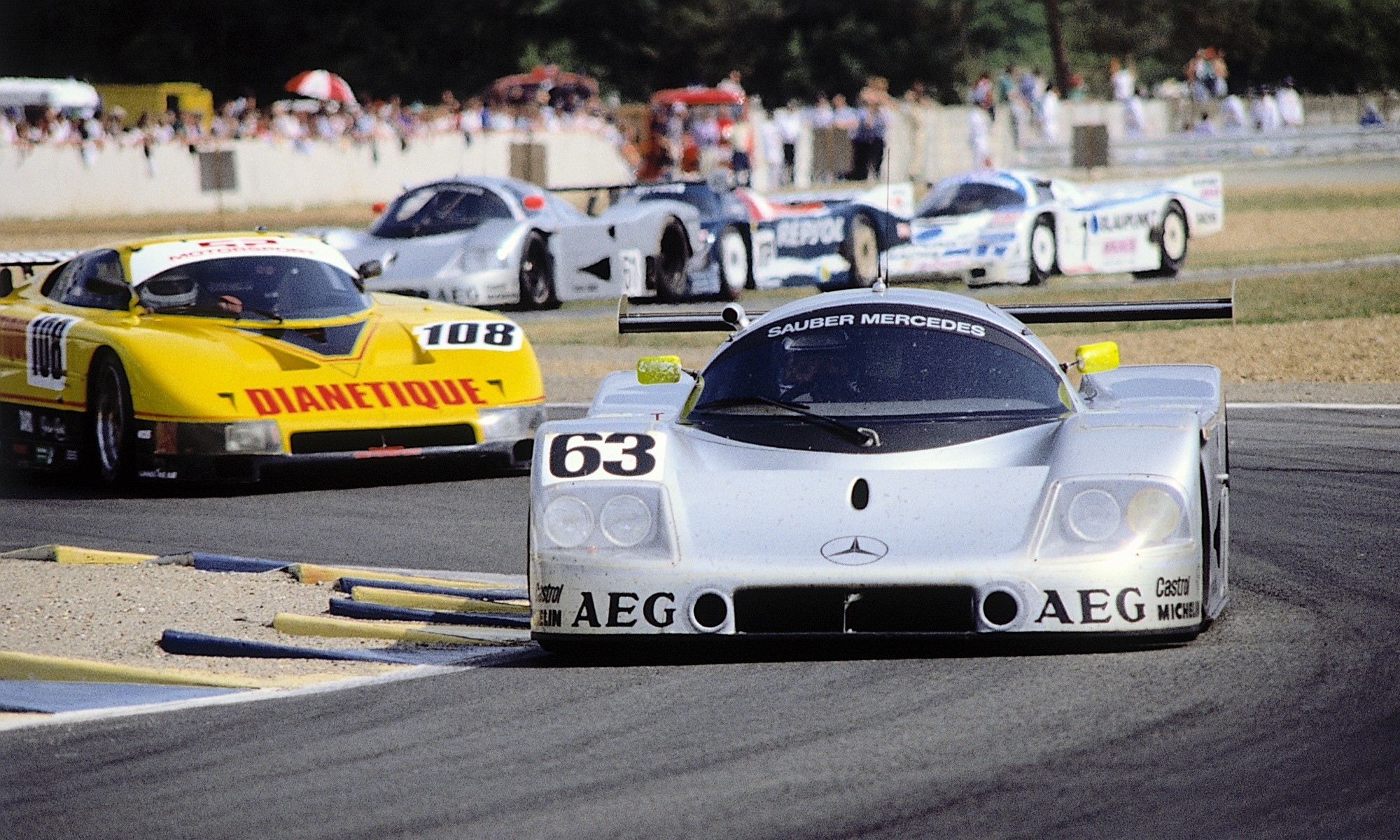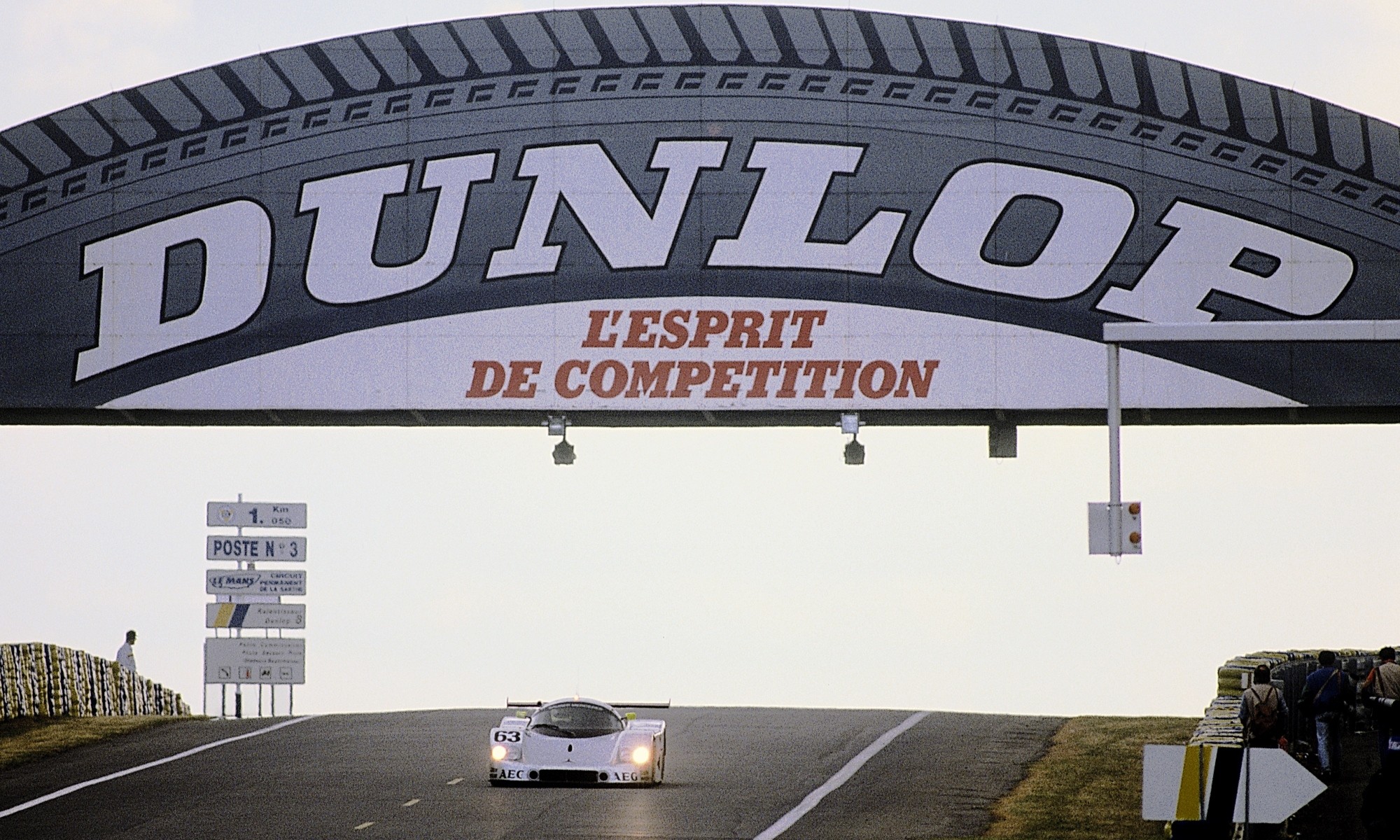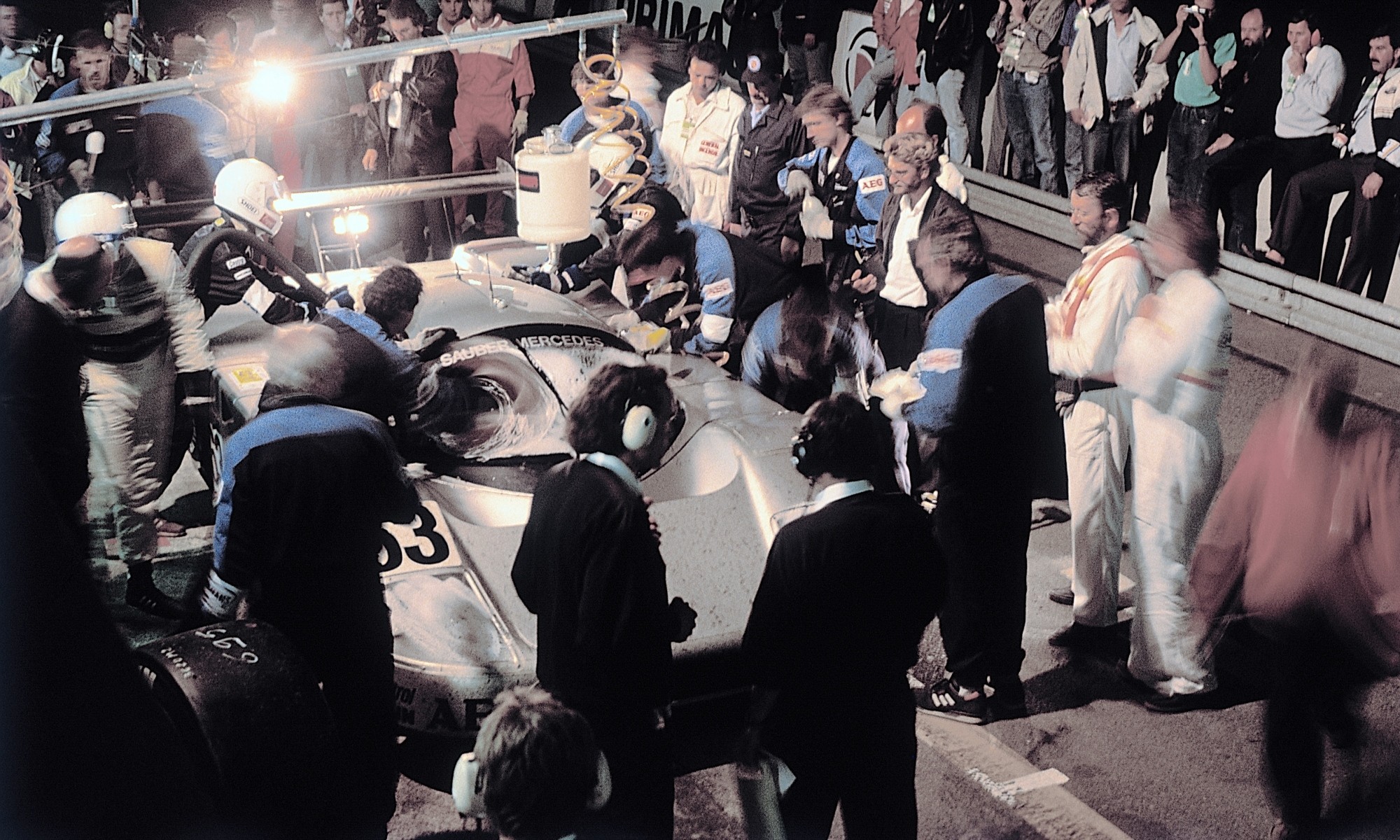Imagine keeping your foot nailed to the floorboard for six kilometres; SIX whole kilometres. For most of us, it’s a dream that will remain unrealised. Although, until 1989 it was a reality for each and every driver who raced in the famous 24 Hours of Le Mans. You see, the 1989 Le Mans was the very last time that the Circuit de la Sarthe featured a Mulsanne Straight with no chicanes.
Follow Double Apex on Instagram and Facebook where we share more car content.
Full throttle forever
Most fans know it as the Mulsanne Straight. But the Ligne Droite des Hunaudières is a six-kilometre long undulating straight that pierces through the French countryside. It forms part of the public road known as the RD338. On one famous race weekend it forms the long back straight of the 13 kilometre-long circuit. From the moment drivers exited Tetre Rouge to the time they arrived at Mulsanne Corner, they would not lift off the loud pedal. This meant that almost half the lap was taken at full throttle.

At the close of the 1980s, most of the front-runners were achieving speeds approaching 400 km/h at the end of the straight. The highest speed ever attained on the circuit was 405 km/h. Roger Dorchy set this speed in a Peugeot WM P88 in 1988. In 1990, race organisers took the decision to slow the cars by breaking up the straight with two chicanes. These have been in use ever since. Top speeds now are around the 330 km/h mark.
Catch highlights from the 2019 24 Hours of Le Mans at this link.
Fast as f…
Sauber-Mercedes claimed victory at the 1989 Le Mans 24 Hours, This was Mercedes’ second win after its first Le Mans triumph in 1952. Manuel Reuter, Stanley Dickens and Jochen Mass drove the winning car. This trio beat all the odds and a 55-car field of sports prototypes. The competition included Le Mans masters Porsche, defending champions Jaguar, Nissan, Mazda and many others. Of all the starters only 19 cars were classified as finishers.
Check out this gallery of 24 Hours of Le Mans winners Part One and Part Two.
The C9 was Sauber’s contender for the race. It was equipped with a newly developed engine from technical partner Mercedes. The 4,9-litre multi-valve twin-turbocharged V8 powerplant produced up to 680 kW for a short time in qualifying. However, this was reduced to a more reliable 530 kW for the race. The Silver Arrows crossed the finishing line in 1st, 2nd and 5th places. The winning trio completed 389 laps at an average speed of 219,990 km/h. They covered a total of 5 265,115 km during the 24-hour race. Think about that for a second, a hair under 220 km/h for TWENTY FOUR hours.
You can watch highlights of the 1989 Le Mans in this great short film. Turn up your speakers as there are long periods to just enjoy the sounds of the racecars going flat out.






![Watch Lewis Hamilton Thrash Ferrari F80 Around Fiorano [video]](https://doubleapex.co.za/wp-content/uploads/2025/06/Lewis-Hamilton-Thrash-Ferrari-F80-500x383.webp)
![2025 FIA WEC 24 Hours of Le Mans: Race Report and Ramblings [w/video]](https://doubleapex.co.za/wp-content/uploads/2025/06/2025-FIA-WEC-24-Hours-of-Le-Mans-start-500x383.webp)
![McLaren Project Endurance Debuts Le Mans Challenger [video]](https://doubleapex.co.za/wp-content/uploads/2025/06/McLaren-Project-Endurance-Le-Mans-Hypercar_03_edited-500x383.webp)
![Michael Schumacher At Le Mans [video]](https://doubleapex.co.za/wp-content/uploads/2025/06/a0052-500x383.webp)
Leave A Comment